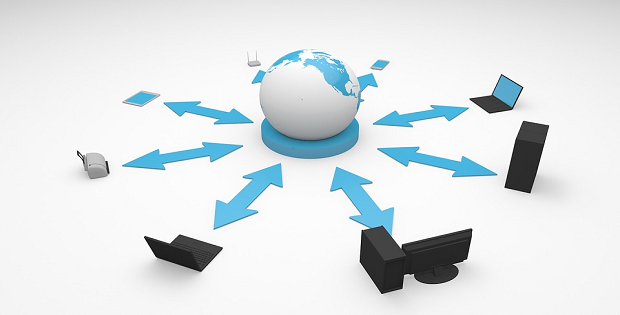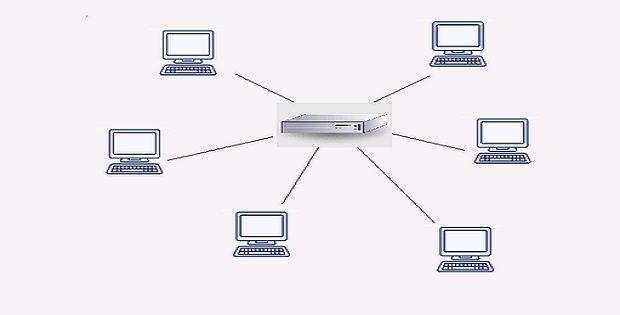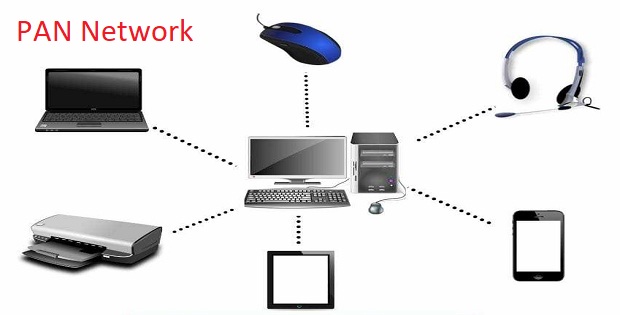What is Networking of Computer? Types & Examples
Last Updated on 1 month by Touhid
Computer networking refers to the connection of computing devices such as computers, printers, and servers. In this article, we will define what is a networking of computer, its features, and types of networking computers.
Table of Contents
What is Networking of Computer?
What is Networking of Computer? The computer network is a system where multiple devices are interconnected for the purpose of sending and receiving data, files, or resources. The computer devices also known as hosts are accessible over a network.
A computer network is a set of computers or groups of computers that are connected with one another for the purpose of resource and information sharing.
The resources can be file servers, documents, storage, printer sharing, and others. The computers are connected via cabling such as fiber optic cable or Ethernet cable or also with wireless (Wi-Fi) connection.
Features of Networking of Computer
The important features of computer networks are File sharing, Security, Scalability, and Reliability.
File sharing
File or resource sharing is one of the main features of computer networks which allows us to share the resources from one computer to another. We can connect a printer, scanner, or fax machine within the computer network and can use the machines over the network.
Security
Network security is another important characteristic of networking of computers which protects your data from unauthorized access and data losses. A computer network should be secure so that when data is transmitted over a network the data will be safe from unauthorized access.
Scalability
Scalability refers to the process of adding new computers or nodes to an existing computer network. The computer network should be scalable so that you can add any computers or extend the network according to your needs.
For example, I have a software company called “X”, and there have 20 employees. Each has a computer and is connected to a network.
If I hire more than 5 employees and want to add new 5 computers within the existing network so, my office network should have the scalability to add new computers.
Reliability
In computing networks, the device may be damaged or does not work properly so, it can impact the entire network system. In that case, develop an alternative solution for data communication between sender and receiver.
Types of Computer Networking
Already our expert team has defined “What is Computer Networking” and its features. Now, in this section, our team will discuss different types of networking for computers.
Computer networks can be categorized according to their size and usage. There are the mainly four main types networking of computer such as:
- LAN (Local Area Network)
- PAN (Personal Area Network)
- MAN (Metropolitan Area Network)
- WAN (Wide Area Network)
1. Local Area Network
What is Networking of Computer Systems? In Computer Systems, a local area network or (LAN) is a computer network that is connected in a physically limited area such as an office building, school, university, or home.
Typically, a LAN consists of different components such as access points, cables, routers, and switches which are connected with application servers, web servers, storage, and other LANs.
A LAN may contain hundreds or even thousands of computers in an office building. LAN allows users to share and access the storage, documents, printers, applications, and resources within the network.
There are two types of local area networks, which are as follows:
- Client-server LAN
- Peer-to-peer LAN
Client-server LAN
In a client-server local area network architecture, multiple clients (devices) are connected to the central server. In that case, the central server controls the application access, storage, and network traffic. A client can be connected to the central server by either cables or wireless connections.
Peer-to-peer LAN
On a peer-to-peer network architecture, each device is directly connected to a switch or router and shares data with other devices. In this architecture, there is no central server to share and receive data from another device. This network is very small; it is used in the home network.
Advantages of Local Area Networks
There are several advantages of using LAN, which are as follows:
Ease of Setup
To set up a LAN is very easy; just need cables, computers, printers, switches, routers, servers, and internet service. You can easily add or remove a device from the LAN and there is no limit to adding new users in LAN.
Resources Share and Reduced Costs
In local area networks, computer resources are shared by connected devices; the resources may be software, printers, scanners, and hard disks. By sharing the resources LAN reduces the network and hardware cost.
Centralized Data Storage
The data of all users are stored on a central server; so, users can access these data from any computer connected within the network. The flexibility, and efficiency will be increased, and required storage servers will be decreased by storing all data into a central server.
Speed
Speed is one of the main advantages of LAN which provides the high speed of all users for uploading and downloading the resources.
Security
In LAN, data is easy to manage and access because all data are stored at only one central server. So, security can be ensured and maintained by implementing administrative access rules and policies.
Disadvantages of Local Area Networks
The local area network has some disadvantages, which are as follows:
Data security
If the central server is not properly secured then unauthorized users may access the server to get the important data or damage the data. Even, if a computer is infected by a virus then, it quickly may spread to other computers within the network.
Limited area
The sizes of the local area network are limited to a building or group of nearby buildings, which cannot extend to a wider area.
Server crashes
If the central server is corrupted or fails to operate then all users connected within the network cannot access the application programs.
Cost
Setting up and maintaining a local area network is expensive because there are different types of software and hardware devices such as servers, switches, routers, and Ethernet cables.
2. Personal Area Network
Personal Area Network or PAN is a network of computers that connects multiple devices within the range of an individual person. The devices can be computers, phones, tablets, printers, keyboards, and other devices such as speakers or electronic devices. The range of personal area network is limited typically within 10 meters (33 feet).
The connection types of PAN may be either wired PAN or wireless PAN. The details are as follows:
Wired PAN
The connection method of Wired PAN is using cable such as USB (Universal Serial Bus) or FireWire.
Wireless PAN
The connection method of Wireless PAN includes signals such as Bluetooth, WiFi, and Zigbee.
Examples of Personal Area Network
Body Area Network
The body area network is related to the mobile network of a person, which moves with that person. Simply, a person creates a network connection to share data with another device.
Offline Network
An offline network or home network is connected with multiple devices such as printers, computers, televisions, and speakers through Bluetooth or Wi-Fi.
Advantages of PAN
There are some advantages of a personal area network, which are as follows:
- Setup is very easy and low cost.
- It is flexible and provides high efficiency.
- PAN is portable.
- It does not require maintenance support.
- Minimum technical skill is needed to use PAN.
- PAN networks are reliable and stable.
- Data synchronization is made easy.
Disadvantages of PAN
There are also some disadvantages of using a personal area network, which are as follows:
- Low network range so, long distance data sharing is not possible.
- It is a relatively slower rate of data transmission.
- It impacts health issues because of using wireless which means microwave signals.
- PAN devices are not compatible with each other.
- PAN devices are costly, unlike other types of networks.
3. Metropolitan Area Network
A metropolitan area network or MAN is a network of computers that interconnects users with computer resources in a metropolitan area such as a city, town, or large area with multiple buildings. MAN covers a larger geographical area than the local area network (LAN) but it is smaller than the wide area network (WAN).
The range of a MAN is 5 to 50 kilometers, where several buildings can be included such as school or college campuses, canteen, and office buildings.
It is designed for those users who need high-speed connectivity for resource sharing. Typically, it is very complex to set up and maintain of metropolitan area network.
4. Wide Area Network
A Wide Area Network or WAN is a computer network that connects groups of computers over a wide geographic area. So, users in one location can communicate and share resources with users in other locations through the Internet.
A wide area network is connected to and collection of smaller networks including local area networks or metro area networks (MANs) with a connection to the internet.
The WAN consists of different types of components such as routers, switches, Fiber, Wireless, Microwave or Satellite, and customer premises equipment (CPE).

Example of WAN
The best-known and most-used example of WAN is the Internet, which covers large geographical locations and is used to transfer files on the Internet.
Types of WAN Technologies
There are a number of different technologies that how we can send data on a wide area network:
- Packet switching
- Circuit Switching
- TCP/IP protocol
- Frame Relay
- Overlay network
- Virtual Circuits
- Software-defined or SD-WAN
Advantages of WAN
There are several advantages of WAN, which are as follows:
- WAN covers a large geographical area of more than 1000 km.
- Data can be stored centralized server.
- Has options for software and resource sharing.
- It provides high bandwidth to access the resources.
- WAN simplifies server management.
- Use encryption technology to ensure data security.
Disadvantages of WAN
The main problem of WAN is security when many users have permission to access the information. It requires many technologies to set up a WAN, so there is a chance of a security gap.
There are also some disadvantages of WAN, which are as follows:
- Need Firewall and Antivirus software to secure the network.
- Setup and installation costs are higher than other networks.
- High-tech skills are required to troubleshoot or maintain the WAN.
To learn more about Network security threats and Prevention.
Conclusion
Finally, the Networking of computers is a group of computers that are interconnected with each other in order to share and access resources such as storage, printers, files, and CDs.
In this post, we have discussed What is Networking of Computer and different types of computer networks also with their advantages and disadvantages. Hope the article will be helpful for you!!!







